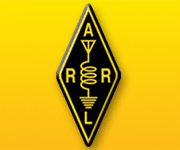On the Air Email - Issue No. 12 (January 2023)
Magazine | Blog | Podcast | Join or Renew | New Ham Resources | Band Chart
Past Issues...
No. 1 | January 2022
No. 2 | February 2022
No. 3 | March 2022
No. 4 | April 2022
No. 5 | May 2022
No. 6 | June 2022
No. 7 | July 2022
No. 8 | August 2022
No. 9 | September 2022
No. 10 | October 2022
No. 11 | November/December 2022
Wondering what to do with your new Amateur Radio license?
This email provides you with articles and advice from experienced hams to help you get active and on the air.
Repeaters — Your Friends in High Places
If you’re a new licensee looking for someone to talk to on your new handheld, you need to know about “Repeaters — Your Friends in High Places.” These stations (which are often positioned on mountaintops, hills, or tall buildings) can “repeat” your handheld’s relatively small signal, giving it a boost up to tens or even thousands of miles away from your location. Read the article to learn how repeaters do what they do, as well as how to find repeaters near you.
Linked Repeaters
It’s possible to communicate even farther than the range of your local repeater by using linked repeaters. On the Air’s article, “Linked Repeaters” explains the types of links that can be used, and goes into the uses of linked repeater networks (think emergency communications).
Tones: The Keys that Unlock Repeaters
CTCSS tones (sometimes called PL tones) are inaudible to human ears, but you won’t be able to transmit on your local repeater unless your radio is programmed to send the specific tone that grants you access. Read “Tones: The Keys that Unlock Repeaters” to find out how tones protect repeaters from interference, and where you can get the tones for repeaters in your area.
Reaching Out on the Repeaters — And Getting Responses
For many new hams, a handheld is their first radio, and the local repeater is where they make their first on-air contact. But what’s a new ham to do when they get on the repeater and there doesn’t seem to be anybody to talk to? “Reaching Out on the Repeaters — And Getting Responses” offers tips on when to listen, what to say, how to get other hams to respond, and more.
Hamspeak
D-STAR (Digital Smart Technologies for Amateur Radio) — Digital voice and data protocol specification developed as the result of research by the Japan Amateur Radio League. D-STAR provides communication via digitized voice and data. Special VHF/UHF repeaters are used to relay signals and can provide interconnection to the internet and other communications facilities.
Join ARRL today for digital access to the archives and the latest issue of On the Air for the knowledge you need to get active, engaged, and on the air!
Subscribe
The On the Air Email is a monthly resource for new hams. Subscribe now.
What's Next
Read advice from experienced hams who will answer questions about what to do after you have gotten your license.
Got a question? Submit it to members@arrl.org.
News & Features >> On the Air Magazine >> On the Air Email >> Issue No 12 2023







.jpg)








